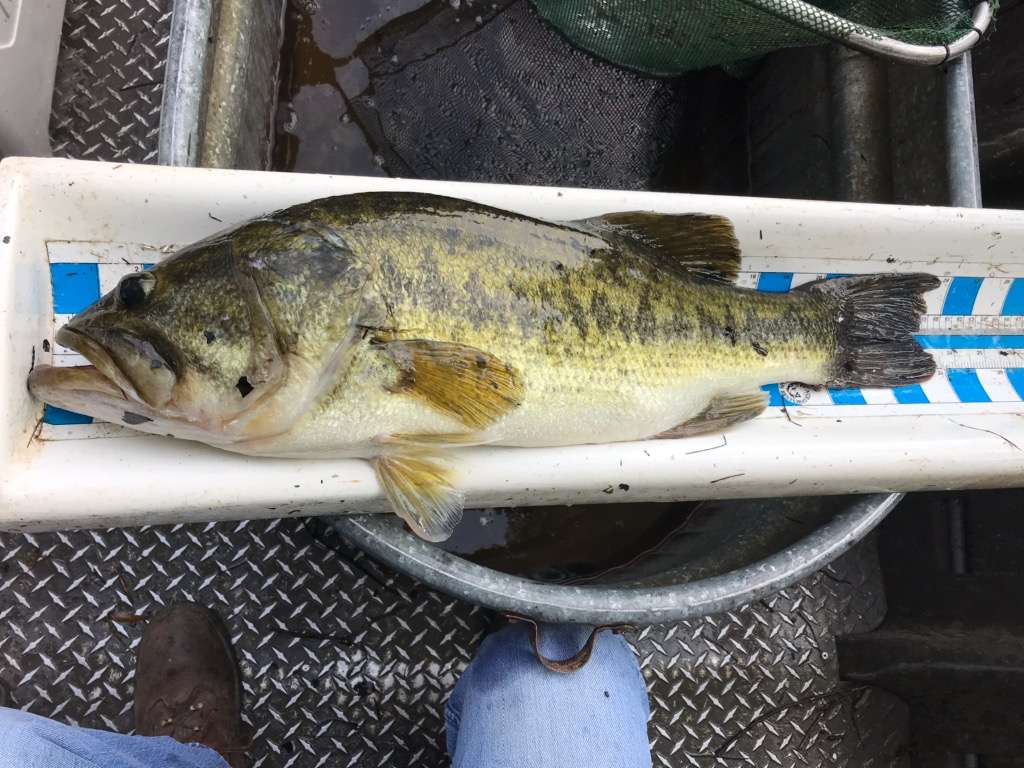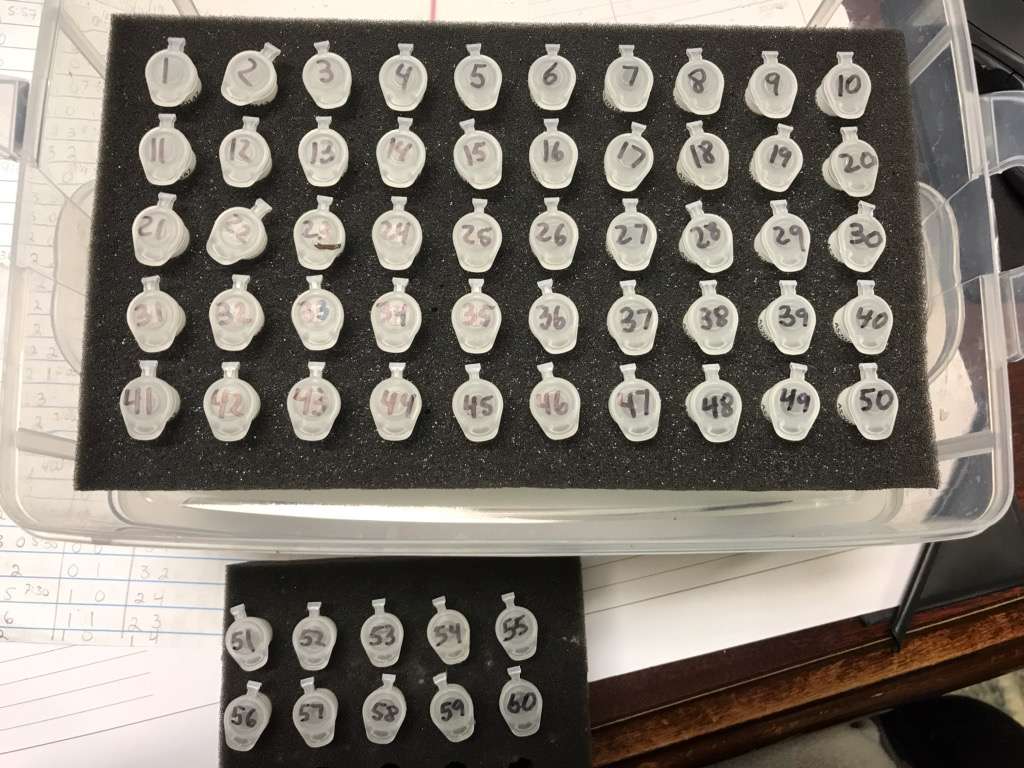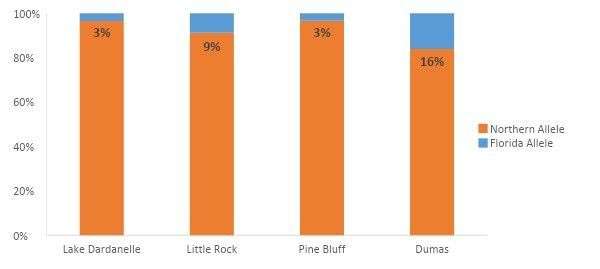
PINE BLUFF, Ark. – For the first time, the Arkansas River has been added to the list of waters to be stocked with Florida bass by the Arkansas Game and Fish Commission (AGFC).
“Based on our initial genetic findings, we’ve decided to stock Pool 2 (Dumas) in 2020, on an experimental basis only,” said Jeffrey Buckingham, Black Bass Program biologist for AGFC. “It had the highest amount of Florida bass genes in the population and has a history of producing large bass. It also has more backwater habitat than any of the other pools, other than Lake Dardanelle.”
First, biologists will boat-stock 25,000 fingerlings into the backwaters of this riverine impoundment that covers 10,600 acres and extends upstream for nearly 36 miles and includes two huge off-river oxbows, Coal Pile and Moore Bayou.
“Additionally, we have access to a nursery pond that flushes into the river, so we are going to stock 350,000 fry, if available, into that pond,” the biologist added.
When they reach fingerling size, those will be released directly into Pool 2. Buckingham estimated that the pond should yield 100,000 plus fingerlings. He also emphasized that Pool 2 is experimental.
“We want to see if we can significantly start introgressing the genes into the population and see if we can start seeing a shift in size structure indices,” he said, adding that Florida bass will be added for at least five years. “We don’t have any plans to stock the other pools at this time. We will see how the result of Pool 2 come out in the coming years.”

AGFC has been sampling for Florida genes in the river and focused on Pool 5 this past year, with findings expected within a few months. Of those pools already investigated, Dumas showed the highest number of Florida alleles with 16%. Little Rock (Pool 6) had 9, while Pine Bluff (4) and Dardanelle (10) each had 3. The agency started with those pools because they receive the most angling pressure from both tournament and recreational anglers.

But if the agency never has stocked Florida bass in the river, why is genetic sampling revealing they are there?
“It’s impossible to know for sure, but Pool 2 likely has the largest amount of Florida genes in it because it is closest to a lake that we regularly stock with Florida bass,” Buckingham explained. “So illegal introductions are likely the case.
“Pool 2 does have the most backwater habitat and is farthest south, so once they got in there, they were likely to thrive a bit better than the other pools. We’ve had reports of anglers moving fish around, even bringing fish in from other states, especially from Texas.”
Illegal introductions by anglers are of increasing concern for fisheries managers across the country, especially regarding snakeheads and Alabama bass, as they have the potential to alter permanently or even devastate otherwise healthy fisheries.
“Anglers moving Florida bass within a state or bringing them from other states is something that many state agencies have had to deal with,” said Gene Gilliland, B.A.S.S. National Conservation Director.
“In my former position with the Oklahoma Wildlife Department, we dealt with the issue all the time. Anglers wanted to make their ‘home’ lake produce big bass just like our other trophy bass lakes. The problem was that our research found that Florida bass simply did not do well in all situations, and there was always the fear that introductions in the wrong places could have unintended negative consequences, actually harming existing bass populations.”
But Florida bass already have been stocked in other waters across Arkansas by AGFC. In fact, the agency released 1.3 million Florida bass into 16 lakes across central and southern Arkansas during 2019. Millwood and Lower White Oaks Lakes were among the most notable, along with 40,000 acre Lake Ouachita. Most of these fish were spawned in Arkansas’ Andrew Hulsey State Fish Hatchery.
“It only takes a couple bass being moved and them successfully spawning to start having an impact on the genes in a population,” Buckingham said. “Additionally, there are privately owned oxbow lakes off the Arkansas River that are privately stocked with Florida bass or F1 hybrids.
“During flooding events, some of these oxbows flush into the river and bass with Florida genes could be entering the river that way.”
More information about Arkansas’ Black Bass Program is available here. Watch a video about Florida bass stocking in Arkansas.





